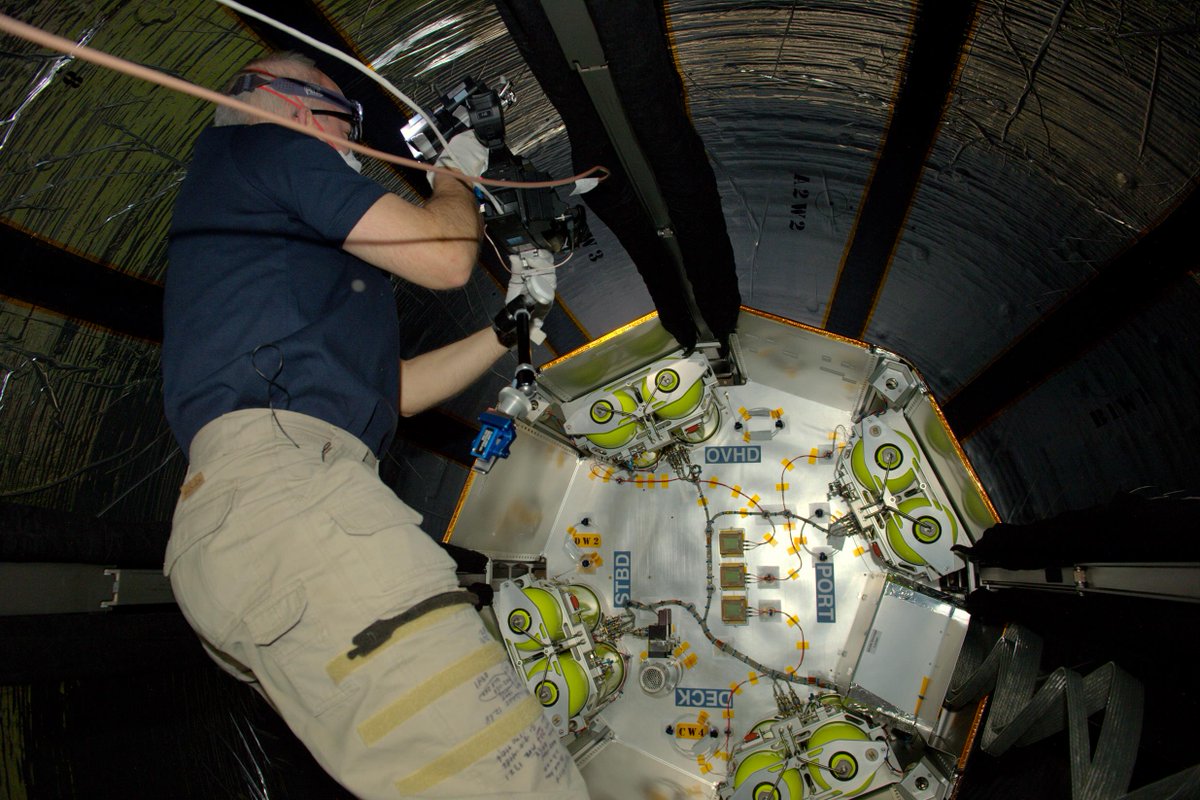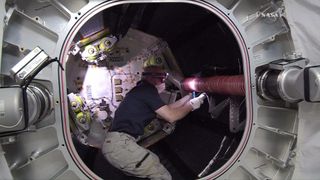Take a Look Inside the 1st Inflatable Space Room for Astronauts (Photos)

Welcome to your new, inflatable room, astronauts!
Yesterday (June 6), astronauts on the International Space Station opened the hatch and entered the Bigelow Expandable Activity Module (BEAM) for the first time. This is the first expandable room to be occupied by astronauts in orbit, and new images provide a glimpse inside this futuristic, inflatable space habitat.

Astronaut Jeff Williams and cosmonaut Oleg Skripochka entered the habitat around 5 a.m. EDT (0900 GMT) yesterday. The module isn't designed to host humans full time, so it appears mostly empty except for support hardware (like air tanks). However, the International Space Station is effectively a series of trailers strung together and shared by up to 13 people, so the empty space available in BEAM may have been a gorgeous sight for Williams and Skripochka. [The Bigelow Expandable Activity Module in Pictures]
BEAM measures 13 feet long by 10.5 feet wide (4 meters by 3.2 m) and provides 565 cubic feet (16 cubic m) of internal volume.
From certain angles, the interior walls of BEAM look black, but a shot from inside the room shows that they are actually reflective, with (what look like) black stripes running lengthwise. Upon entering BEAM, Williams told mission control that the habitat "looked pristine and that it was cold inside, but there was no evidence of condensation on any surfaces," according to an agency representative speaking on NASA TV.
Astronauts will enter the habitat periodically to collect data from multiple sensors that monitor BEAM's status and performance. On Monday, Williams and Skripochka collected an air sample, installed air ducts and began downloading data collected during the expansion of the new room.
"Over the next two days they have a few more … opportunities to enter BEAM and to deploy other sensors and equipment inside," the NASA representative said. The crewmembers are scheduled to enter BEAM today and tomorrow (June 7 and 8), the representative said, adding that after each crew entry, the BEAM hatch will be closed. There is no schedule for crew entries into BEAM after Wednesday, according to the representative, but NASA anticipates six to seven crew entries per year.
Get the Space.com Newsletter
Breaking space news, the latest updates on rocket launches, skywatching events and more!
BEAM was attached to the station on April 16 and inflated to its full size on May 28. This is the first time humans have occupied an expandable habitat in space, even though Bigelow (a private company) has tested its modules in orbit before.
BEAM will stay attached to the station for two years, after which it will be jettisoned into Earth's atmosphere, where it will burn up upon re-entry.
Expandable space habitats offer certain advantages over rigid structures. Primarily, expandable habitats are lighter, and because they can be compressed, their maximum size isn't limited to the maximum size of a rocket's cargo compartment. (The larger modules on the space station went around this problem by flying directly into space on top of a rocket, instead of packing the module inside a cargo capsule). When compressed, BEAM was about 7 feet long by 8 feet wide (2.1 by 2.4 m).
This year, Bigelow Aerospace announced plans to launch a larger expandable habitat called the B330, which would be able to orbit the Earth independently of the space station. That module is slated to launch by 2020, Bigelow Aerospace representatives have said.
Follow Calla Cofield @callacofield. Follow us @Spacedotcom, Facebook and Google+. Original article on Space.com.
Join our Space Forums to keep talking space on the latest missions, night sky and more! And if you have a news tip, correction or comment, let us know at: community@space.com.

Calla Cofield joined Space.com's crew in October 2014. She enjoys writing about black holes, exploding stars, ripples in space-time, science in comic books, and all the mysteries of the cosmos. Prior to joining Space.com Calla worked as a freelance writer, with her work appearing in APS News, Symmetry magazine, Scientific American, Nature News, Physics World, and others. From 2010 to 2014 she was a producer for The Physics Central Podcast. Previously, Calla worked at the American Museum of Natural History in New York City (hands down the best office building ever) and SLAC National Accelerator Laboratory in California. Calla studied physics at the University of Massachusetts, Amherst and is originally from Sandy, Utah. In 2018, Calla left Space.com to join NASA's Jet Propulsion Laboratory media team where she oversees astronomy, physics, exoplanets and the Cold Atom Lab mission. She has been underground at three of the largest particle accelerators in the world and would really like to know what the heck dark matter is. Contact Calla via: E-Mail – Twitter